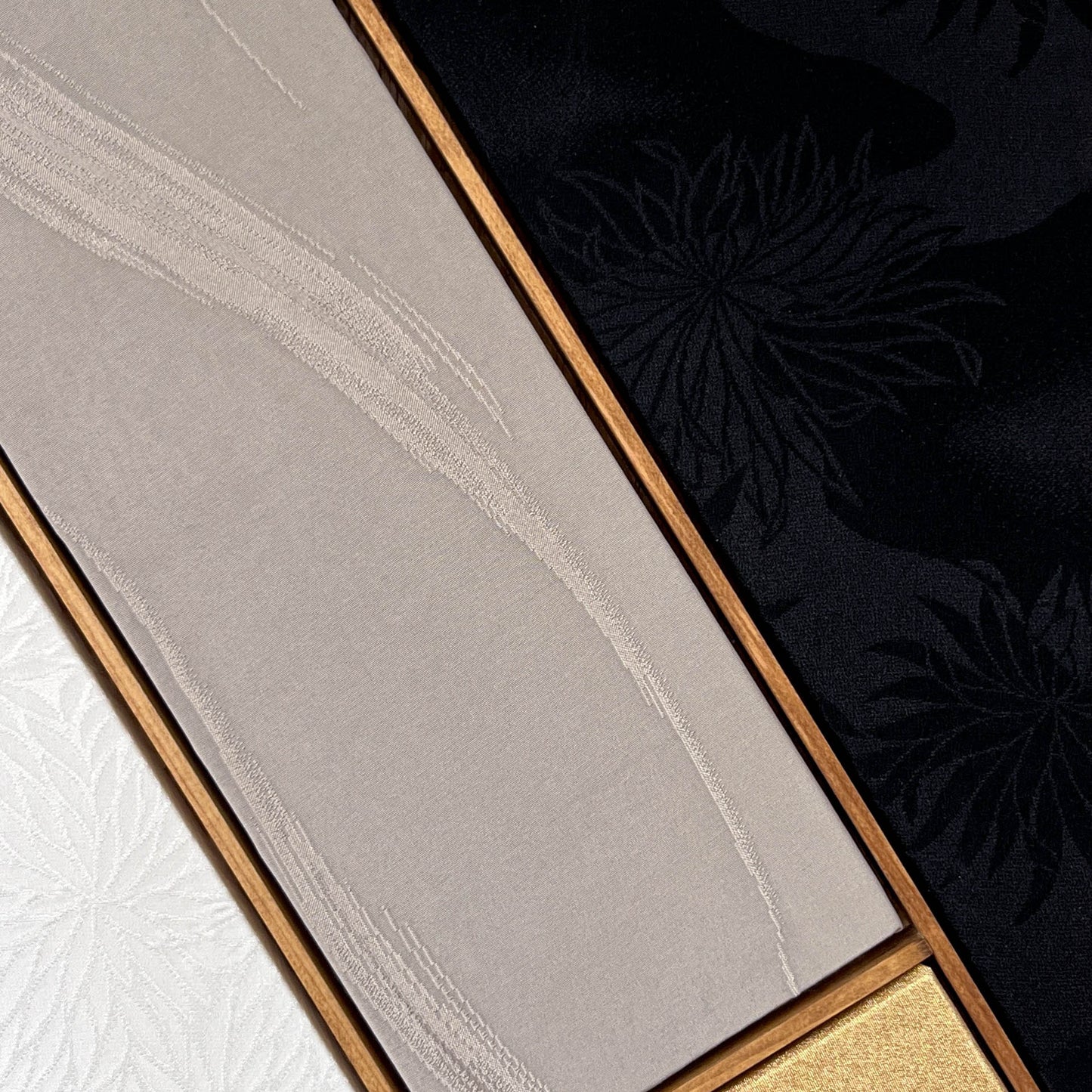Monochrome Geometry
Monochrome Geometry
Verfügbarkeit für Abholungen konnte nicht geladen werden
Size
30 x 40 x 4cm
Materials
silk (outside-layer) , wooden frame (paulownia)
Story behind the work
This work is inspired by traditional Japanese nature colors symbolism, and is framed in paulownia wood originally used for a kimono chest-of-drawers.
It is filled with storytelling and sense of luxury.
Explanation and meaning of pattern and colors
In Japanese tradition, monotone colors, carry meanings of simplicity, elegance, and restraint, often tied to the concept of wabi-sabi (侘寂), which appreciates beauty in simplicity and imperfection. Monotone color schemes in art, clothing, and design emphasize subtlety and serenity, creating a calm, reflective atmosphere. These colors are also associated with mindfulness, focusing attention on texture, form, and craftsmanship rather than vibrant colors.
In kimonos and traditional textiles, monotone or subdued color palettes can symbolize maturity, dignity, and refined taste, particularly for formal or ceremonial occasions. This aesthetic reflects a broader cultural appreciation for nature’s subtle hues and a reserved, introspective approach to beauty.
Characteristics of the fabric
I used pieces of kimono, obi belt, haori coat, and obiage - a full attire, that could no longer be used as clothing and kiritansu chest-of-drawers that would normally be discarded to create the ultimate upcycled piece.
About the frame
Kiritansu - chest-of-drawers for kimono, is traditionally made from paulownia wood, a uniquely Japanese material closely tied to the world of kimonos.
Paulownia wood is known as the lightest wood in Japan, prased for its natural luster, resistance to moisture, and resilience against cracking. Since ancient times, it has been used in crafting furniture, chests, and musical instruments.
During the Edo period, it became customary to store cherished kimonos in paulownia chests, which offered fire resistance and protection from moisture and insects.
Traditionally, when a daughter was born, a paulownia tree would be planted. Upon her marriage, the tree would be cut down, and the wood would be used to craft a chest for her as a wedding gift.
Following the Ansei Earthquake during the late Edo period in 1855, paulownia chests gained popularity due to their ability to withstand fires and even float in water, thereby safeguarding their contents during floods.
I use antique kiritansu that can’t be used as furniture anymore to create basis and frames for my works. It adds them even more authentic atmosphere of traditional wabisabi spirit. Can you feel it?
Decoration Advice
Canvas can be displayed on a table, wall, etc. Hanging on a wall requires hooks, tacks or nails. It can also be displayed propped up on an easel. Ideal for a room makeover, housewarming gift, present, or souvenir for a loved one.
Precaution
All the works are made from real kimonos, antiques and vintages. For this reason, the fabric may have traces of long-term use and minor fabric damages. In case there are any scratches or stains, we always add a photo of the area on the item page, so please check before purchasing. Regarding precaution, cancellation and refund policy, please refer to the refund policy in the footer section of the site for information.






























